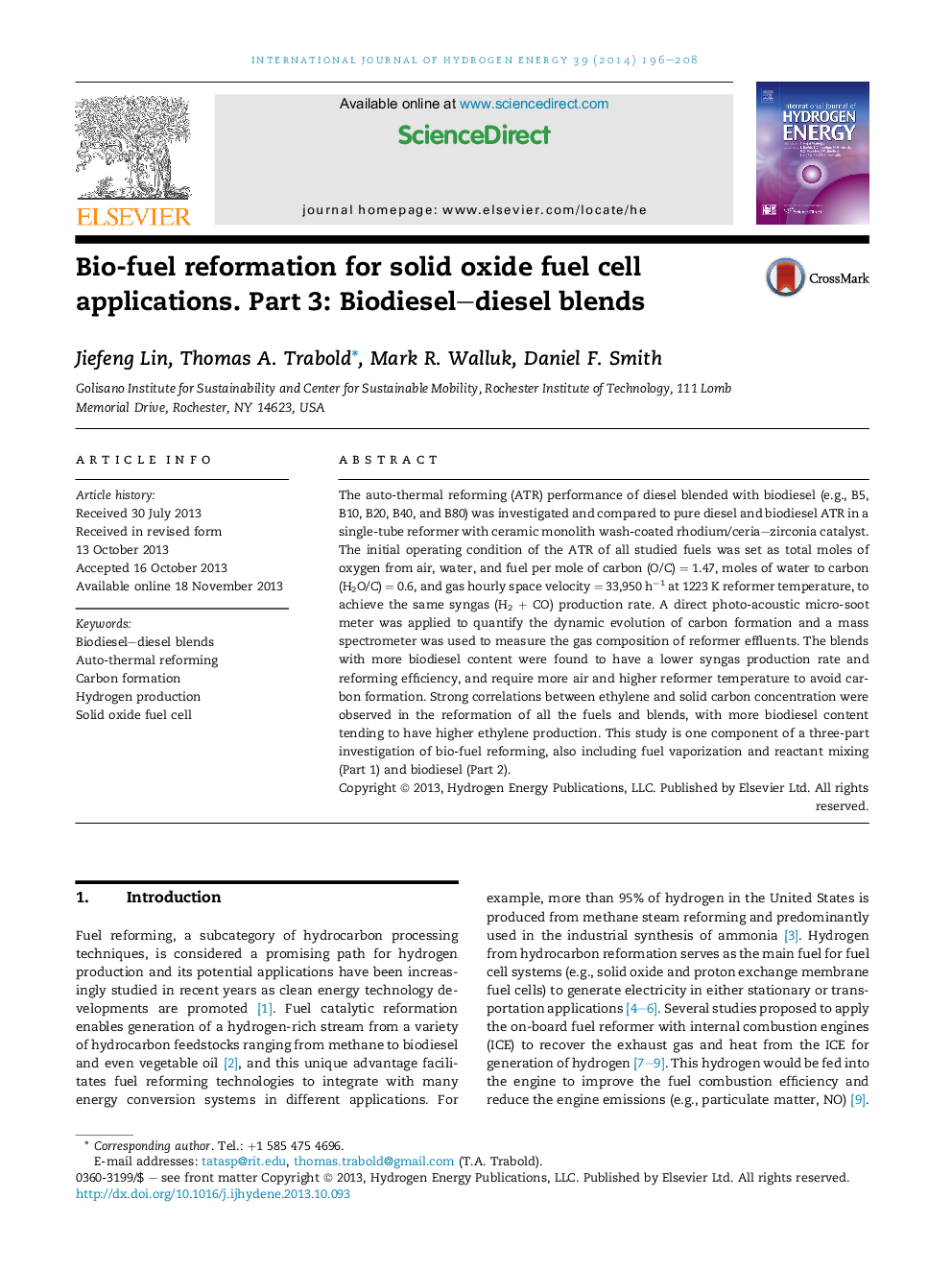| Article ID | Journal | Published Year | Pages | File Type |
|---|---|---|---|---|
| 1273932 | International Journal of Hydrogen Energy | 2014 | 13 Pages |
•Auto-thermal reformation of diesel blended with various proportions of biodiesel.•Blends with more biodiesel require more air/higher temperature to avoid carbon.•Micro-soot meter was used to determine time-resolved solid carbon in reformate.•Strong correlation observed between ethylene and solid carbon concentrations.
The auto-thermal reforming (ATR) performance of diesel blended with biodiesel (e.g., B5, B10, B20, B40, and B80) was investigated and compared to pure diesel and biodiesel ATR in a single-tube reformer with ceramic monolith wash-coated rhodium/ceria–zirconia catalyst. The initial operating condition of the ATR of all studied fuels was set as total moles of oxygen from air, water, and fuel per mole of carbon (O/C) = 1.47, moles of water to carbon (H2O/C) = 0.6, and gas hourly space velocity = 33,950 h−1 at 1223 K reformer temperature, to achieve the same syngas (H2 + CO) production rate. A direct photo-acoustic micro-soot meter was applied to quantify the dynamic evolution of carbon formation and a mass spectrometer was used to measure the gas composition of reformer effluents. The blends with more biodiesel content were found to have a lower syngas production rate and reforming efficiency, and require more air and higher reformer temperature to avoid carbon formation. Strong correlations between ethylene and solid carbon concentration were observed in the reformation of all the fuels and blends, with more biodiesel content tending to have higher ethylene production. This study is one component of a three-part investigation of bio-fuel reforming, also including fuel vaporization and reactant mixing (Part 1) and biodiesel (Part 2).
